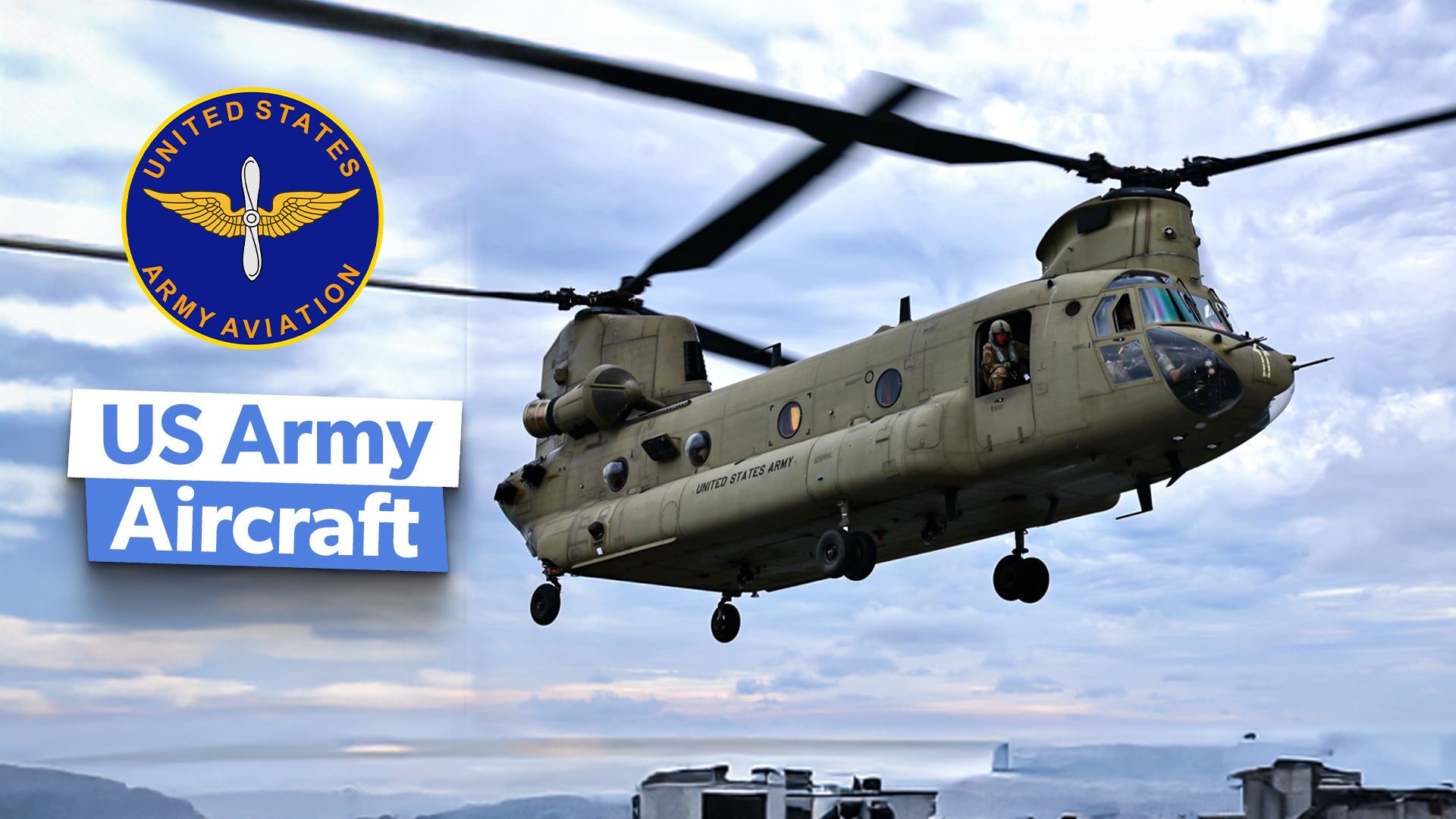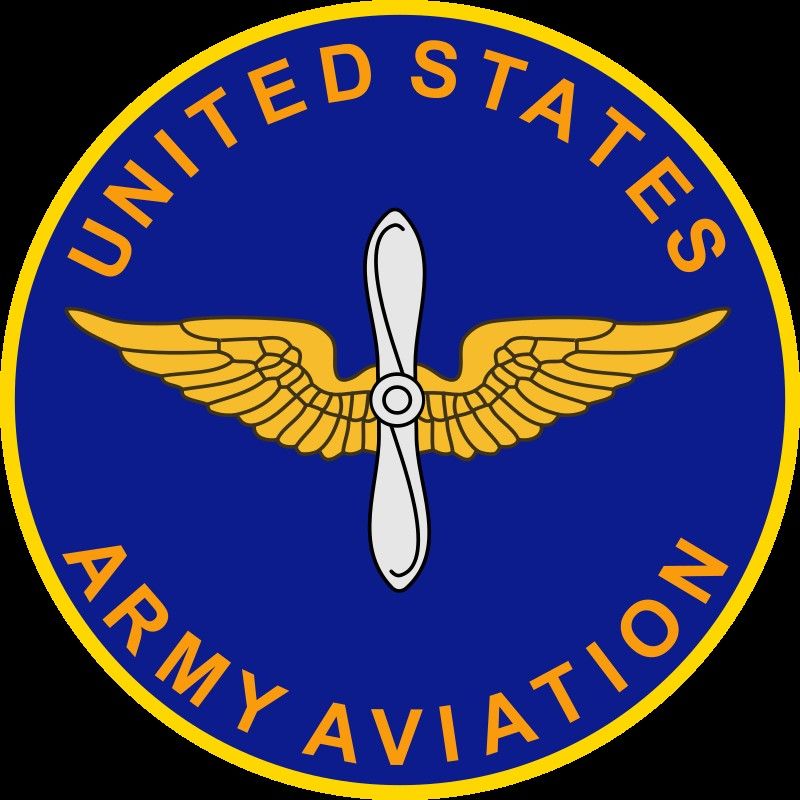Summary
- The US Army primarily utilizes helicopters for combat missions, but there is still at least one fixed-wing aircraft in the fleet.
- The UH-60 Black Hawk is a versatile aircraft used for various operations like search & rescue and fire fighting.
- The Boeing H-47 Chinook and AH-64 Apache are key helicopters involved in transport, combat, and attack missions.
The United States Army has traditionally been considered the “ground-pounding” (as it were) branch of the US Armed Forces, and understandably so, what with the prevalence of the Artillery (“King of Battle;” or less formally, “cannon cockers”), Infantry (“Queen of Battle”), and Armor branches and whatnot. This became especially true in September 1947, when the US Army Air Forces (USAAF) broke away from the Army and became the independent branch of service we know and love as the US Air Force (USAF), and took dang near all the fighter planes and bombers with them.
Indeed, as far as I can tell, the last time the US Army employed any **fixed-wing** combat aircraft was during the Vietnam War, as manifested in the OV-1 Mohawk (my writeup of which is still pending publication as I type these words). However, make no mistake, Army Aviation is still very much alive and well, thank you very much, and though it’s mostly rotary-wing assets nowadays, there is still at least one fixed-wing warbird in their arsenal. Simple Flying now takes a look at the specifics of the Army Aviation fleet.
The short answer
The super-abbreviated answer to the question posed by the title of this article comes to us from the Army Careers webpage:
“Depending on your specialty, you could fly helicopters including the UH-60 Black Hawk, the CH-47 Chinook, and AH-64 Apache, or cutting-edge fixed-wing aircraft, like the C-12 Huron.”
Sikorsky UH-60 Black Hawk
Might as well go in the same order as the just-quoted passage, Hooah? As Simple Flying’s Aaron Spray noted back on August 16th:
“The Sikorsky UH-60 Black Hawk is one of the most successful military medium-lift helicopters ever built. It first entered service in 1979 and remains in production. Over its life, the Black Hawk has been continuously modernized and updated and remains one of the leading military helicopters in the world. The Black Hawk boasts many capabilities (although only the Russian Ka-52 attack helicopter allows pilots to eject).”
Aaron lists the Top 5 capabilities of the Black Hawk as the following:
- Search and rescue (SAR)
- Medevac
- External lift
- Combat assault
- Firefighting
Unfortunately, many American civilians will associate the Black Hawk with a tragic event: the 1993 Battle of Mogadishu, Somalia, in which 18 US soldiers were killed, 84 more were wounded, and three Black Hawks were shot down battling the insurgents of Somali warlord Mohamed Farrah Aidid; the downed choppers were the inspiration for the title of Mark Bowden’s bestselling 1999 non-fiction book Black Hawk Down: A Story of Modern War, which in turn was adapted into the 2001 motion picture directed by Ridley Scott (of Alien and Blade Runner fame) and starring Josh Hartnett and Ewan McGregor.
On a personal note, I got to ride a Black Hawk exactly once. Appropriately enough, it was on America’s birthday, the 4th of July 2011, and I was spending my first day “in-country” on my very first Iraq stint, riding from Camp Victory in Baghdad en route to my posting at Al Asad Airbase in Anbar Province. The chopper’s crew chief was wearing an Uncle Same costume, and he shot red, white, & blue flares off the ramp as we took off. Aahh, the memories…too bad I don’t have pics of the occasion.
Boeing H-47 Chinook
As I once read in the Vietnam Ground Zero novel series by Eric Helm back in the 1980s, this whirlybird was nicknamed the “Sh*thook” because of all the (literal and figurative) sh*t stirred up by the chopper’s powerful rotor blades.
As noted by manufacturer Boeing’s official info page:
“The H-47 Chinook is the heavy-lift helicopter of choice for the U.S. Army and 20 international operators. It is an advanced, multi-mission, tandem rotor helicopter, proven in cargo and troop transport, search and rescue, casualty evacuation, special operations, humanitarian and disaster relief, and more.”
“The tandem rotor design provides for increased stability and control, maximum agility, ease of loading and unloading and superior performance in wind. The Chinook can operate where others cannot. Rear ramp access on any terrain is not restricted by tail rotor clearance, allowing tandems to operate on unprepared, mountainous positions and execute the unique pinnacle landing capability. The design also allows the Chinook to fly at up to 20,000 feet [6,096 m], higher than other helicopters in its class.”
The Chinook made its maiden flight on September 21, 1961, and officially entered operational service with the Army the following year. As of 2012, over 1,200 have been produced.
Hughes/McDonnell Douglas/Boeing AH-64 Apache
Now to get to the true “American Badass” (channeling both Kid Rock and WWE Hall of Famer The Undertaker here) of Army Aviation. In the spirit of “work smarter, not harder,” I’m going to kick off this segment by citing my recent standalone article on this battle-proven chopper:
“The US Army’s AH-64 Apache attack helicopter (originally built by Hughes Helicopters from 1975 to 1984, followed by McDonnell Douglas from 1984 to 1987, and Boeing ever since), is arguably the most effective and battle-proven helicopter gunship of all-time…Boasting a top speed of 227 mph (366.32 kph/ 197.25 knots) and wielding a formidable arsenal consisting of the M230 30mm chain gun, Hydra-70 and CRV7 70 mm air-to-ground rockets, the AGM-114 Hellfire missile, and AIM-92 Stinger, US Army Aviation has definitely put this warrior whirlybird (with the politically incorrect Native American moniker) to good use during its 38 years of official operational service.”
Long story short, the Apache has proven its ability to KATN (Kick A$$ and Take Names) from Panama (Operation Just Cause in December 1989) to Iraq (Operation Desert Storm in 1991 and Operation Iraqi Freedom in 2003).
During Desert Storm alone, Apaches destroyed over 500 Iraqi Army main battle tanks (MBTs), and made additional history by making the very first strikes of that war, as noted by GlobalSecurity.org:
“On 17 January 1991, four MH-53J Pave Low III helicopters from the 20th Special Operations Squadron led two flights of Apaches to make the first strike of the war. Pilots of the two flights, eight AH-64A Apache attack helicopters of 101st Airborne Division (Air Assault) fired the first shots of Operation Desert Storm. Codenamed ‘ Normandy ‘, in remembrance of the 101st ‘Screaming Eagles’ airborne operation during World War II, the dangerous mission consisted of simultaneous attacks designed to knock-out two key early-warning radar installations in western Iraq at precisely 0238 hours, 17 January 1991. Both radar sites, each hit by a team of four Apaches, were destroyed within a time span of 4.5 minutes. Each pilot’s primary target became the secondary target for adjacent Apache team members.”
Beechcraft C-12 Huron
Ah, now we finally get to the US Army’s primary fixed-wing asset. As noted by GovernmentProcurement.Com:
“The C-12 Huron is the most prolific aircraft in the U.S. Army’s fixed-wing fleet. With over 200 units in the fleet, the C-12 fleet in the Army is larger than most Air Forces globally. An aircraft fleet as large as the C-12s requires a lot of resources to maintain the expected airworthiness and mission capability rates for the fleet…While the C-12 has proven to be rugged and extraordinarily reliable, it is still a machine that will break. The C-12 has been in continuous service for almost 50 years now, entering service in 1974, and it will soldier on for years to come. ”
The Army’s primary uses for the Huron are:
- Aerial surveillance
- Light cargo transport
- Medical evacuation (MEDEVAC) missions
- Priority personnel transport
Specifications of the C-12 include:
|
Crew: |
1 to 5 |
|
Capacity: |
13 pax |
|
Fuselage Length: |
43 ft 9 in (13.34 m) |
|
Wingspan: |
54 ft 6 in (16.61 m) |
|
Height: |
5 ft (4.6 m) |
|
Powerplant: |
2 × Pratt & Whitney Canada PT6A-42 turboprop engines, 850 shp (630 kW) each |
|
Max Airspeed: |
289 kn (333 mph, 535 km/h) at 15,000 ft (4,572 m) |
P.S. But what about the Huey?
“Billy, get to the choppa’!”
–MAJ Alan “Dutch” Schaefer (Arnold Schwarzenegger) to SFC Billy Sole (Sonny Landham) in Predator (1987 original)
“I love the smell of napalm in the morning. It smells like…victory!”
— LTC William “Bill” Kilgore (Robert Duvall) in Francis Ford Coppola’s Apocalypse Now (1979)
Nothing screams “old-school Army Aviation” quite like the Bell UH-1 “Huey” (officially the Iroquois), between its real-life usage in the Vietnam War and in a myriad of war movies and action-adventure flicks, particularly the two I just cited and paid homage to.
However, the venerable ol’ Huey was retired from active-duty Army service in 2005 and from the Army National Guard in late 2016. However, as of this year, they actually still remain in service with the Air Force — yes, that’s right, the Air Force — though they’re slated for replacement in that branch too.
On a personal note, I’ve had the honor & pleasure of riding a Huey on four different occasions. The first time was during Operation Homecoming USA (UHUSA), the long-overdue welcome home parade for Vietnam veterans that took place in Branson, Missouri, back in June 2005. It was a genuine Vietnam-vintage Huey flown by genuine Vietnam vets; naturally, I just had to sit in the door gunner’s seat. The other three occasions were during my second Iraq contracting stint (assigned to the Port of Umm Qasr in Barah Province), when I was transiting to & from R&R as well as demobilization; this time, the whirlybirds were flown by US State Department-contracted pilots. Lemme tell ya, there’s something to be said for sitting in the former door gunner’s seat (even though this time the gun had already been removed since it was no longer a military mission) with your feet dangling over the edge whilst overflying the former Presidential Palaces of long-dead former Iraq dictator Saddam Hussein. So. Much. Fun.
Fare thee well, Huey, gone (from Army service) but not forgotten!


